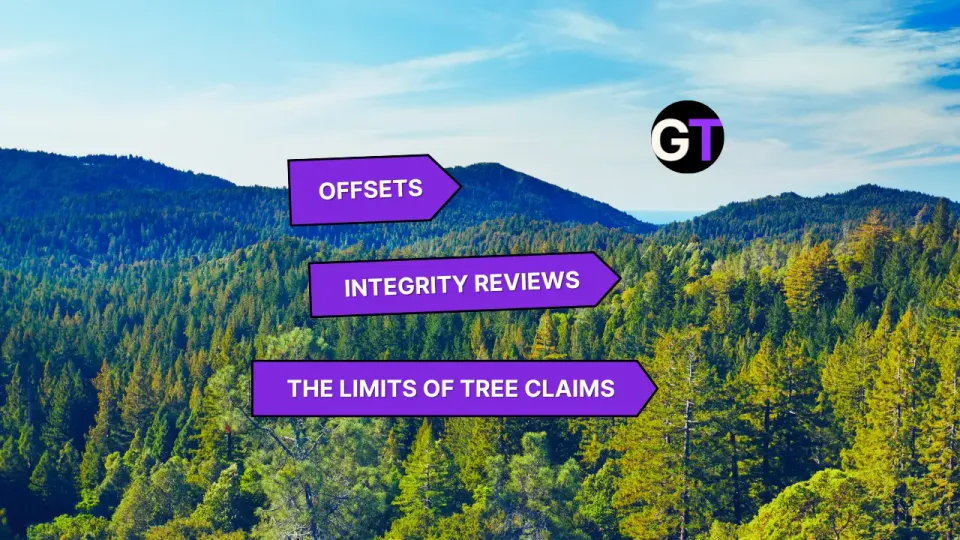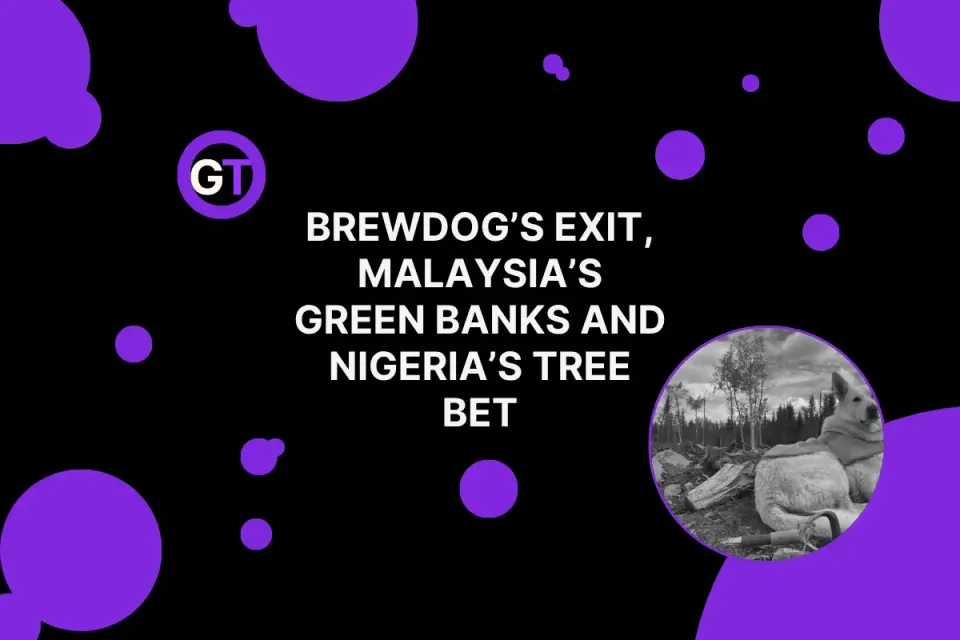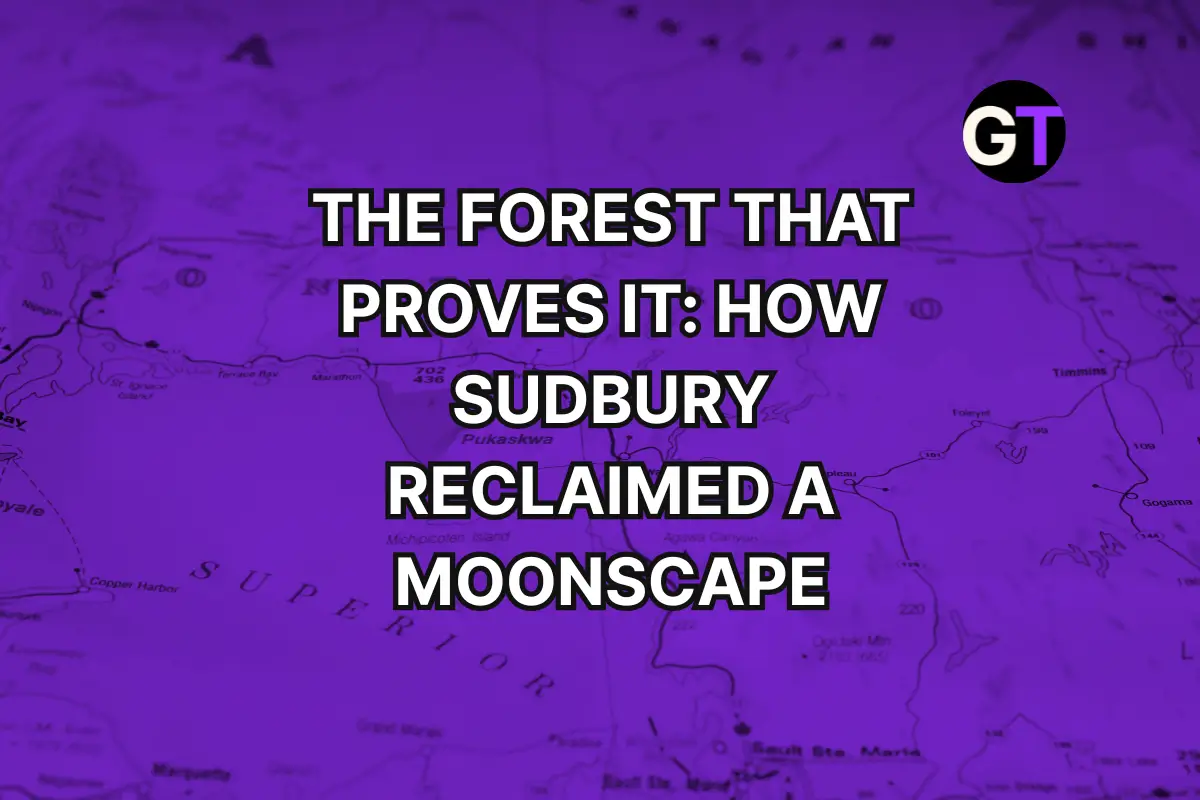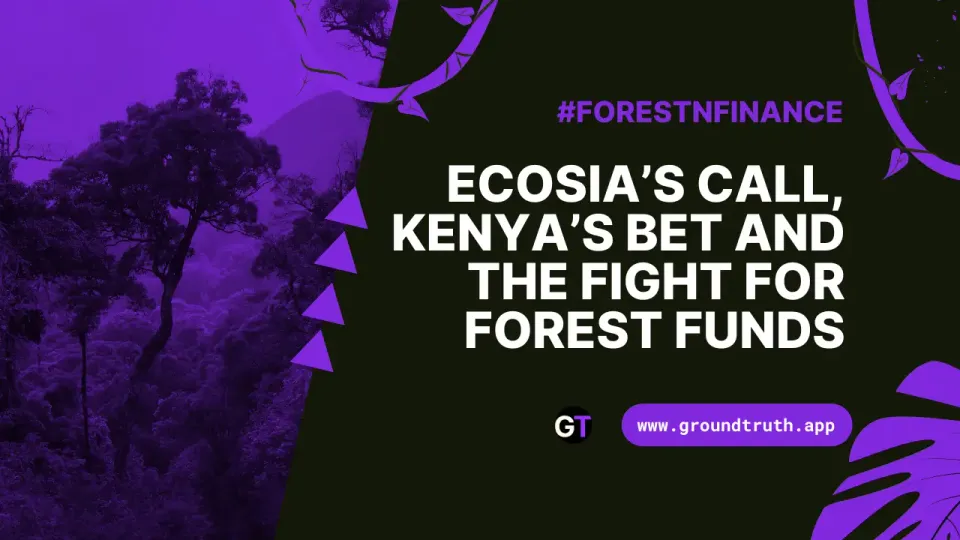Quiet Planting, AI Forest Tools and Fungal Carbon Credits
From corporate greenhushing to AI forest tracking, fungal credits and tribal reforestation, this week we map where climate action takes root.

Greenhushing or Greenlighting? What Quiet Climate Commitment Means for Corporate Tree Planting
If you're wondering what the ESG backlash means for corporate-backed tree planting, here's a twist: most companies aren’t moving away from sustainability pledges—they’re just going quiet. A new study of 75 global firms shows 85% are holding steady or even stepping up on climate goals, despite political pressure. The catch? They're doing it without press releases or public fanfare. If this trend holds true for planting initiatives, it means more trees may be planted—but fewer people will know why, how, or where.
💬 So what happens if corporate ESG planting goes quiet? How do we track credibility—or impact—if no one's talking? Are Net Zero and Trillion Tree pledges no longer “hip” or “current”?
👉👉 Read more in Harvard Business Review
Burn Severity and Salvage Logging: What It Means for Post‑Wildfire Douglas‑fir Recovery
Can reforestation actually work in fire-ravaged forests? A new study from British Columbia’s Alex Fraser Research Forest offers a cautionary tale. After a 2017 wildfire, Douglas-fir seedlings grew best in high-severity areas without salvage logging—where light was already abundant and extra disturbance only hurt. In moderate-severity zones, some light-touch salvage logging helped, likely by opening gaps that improved water use and photosynthesis. The big takeaway? One-size-fits-all won’t cut it. Matching logging intensity to burn severity may be key to getting trees in the ground—and keeping them there.
💬 For post-fire planting, will we tailor restoration strategies to the land—or just plant and hope for the best?
👉👉 Read more in Forest Ecology and Management
Mobilizing AI to Monitor Forest Growth and Carbon Sequestration
Forests are disappearing at a startling clip—over 1.6 million square miles lost since 1990—and tracking their health is getting harder by the day. To level up, FAO and their partners teamed up in Rome for a workshop on AI-enhanced forest monitoring, convening experts from agencies, governments, tech firms, and science institutions. Their aim? Marry satellite and field data using models like MATRIX and For‑Growth to push accurate, scalable estimates of how forests sequester carbon.
The pitch: democratize high-end forest data, particularly in Global South nations where capacity is thin. Open access to global plot networks, AI tools, and transparent carbon accounting could shift forest monitoring from “nice to have” to backbone of climate policy and corporate reporting.
💬 If forests are getting smarter tools, will the data finally match the hype—and help us hold projects accountable?
👉👉 Read more in Purdue
Can Dinner in the Forest Save It? Mona Curator Proposes “Embassy” to Rewrite Tasmania’s Logging Future
What if the next major forestry accord wasn’t hammered out in a boardroom—but over dinner, under the canopy of an old-growth forest? That’s the pitch from artist and Mona co-curator Kirsha Kaechele, who’s calling for a “forest embassy” deep in Tasmania’s native forests to bring together foresters, conservationists, and Palawa elders. The goal? Land-swap deals that protect ecologically rich areas while preserving jobs, with First Nations voices guiding every step.
Not everyone’s sold. Conservation groups want an immediate end to native logging, some foresters say they’re already aligned, and Indigenous leaders haven’t officially signed on. But Kaechele’s betting that old-growth diplomacy—fueled by carbon markets, eco-tourism, and shared meals—could turn decades of conflict into a new kind of collaboration.
💬 If we broke bread beneath the trees, could we maybe stop breaking the forest ecosystem?
👉👉 Read more in Wood Central
Netflix Backs Fungal Forest Fix: A Different Kind of Carbon Credit
Netflix just became the first buyer of carbon credits from Funga, a startup restoring underground fungal networks to supercharge forest carbon drawdown. The partnership spans 11 years and over 28,000 acres across 12 U.S. states—making it one of the largest fungal restoration efforts in the world. Funga’s approach doesn’t just boost carbon capture; it rebuilds biodiversity where it's often overlooked: in the soil.
By measuring gains in tree growth from fungal inoculation and comparing them with control plots, Funga delivers unusually verifiable, “additional” credits—something sorely lacking in much of today’s offset market. Netflix isn’t just planting trees; it’s betting on better roots.
💬 Could this be a model for what biodiversity-led offsets should look like? Or just one small step toward a healthier, fungi-filled future?
👉👉 Read more in Forbes
Reforesting in Defiance: Philippine Tribes Push Back Against Mining Incursions
In the mountains of Mindanao, tribal communities are flipping the script on coal barons with a comeback story rooted in soil. After strip mines gutted ancestral forests and truckloads of coal kicked up dust and dissent, the TAMASCO tribe didn’t just protest—they planted. Their revival of Balik Lasang (“return to the forest”) isn’t just reforestation; it’s rebellion with roots. Against a backdrop of disappearing ownership records and shadowy corporate handoffs, they’re sowing hardwoods, fruit trees, and fierce resistance, one sapling at a time.
💬 When a megacorp ghosts its way out of accountability, who’s really driving the “energy transition”?
👉 👉 Read the full article in Mongabay
Carbon Credits, Green Grabs & Leaky Forests
What if your carbon credits came with a side of land conflict? In a new World Bank blog, researchers unpack how forest carbon projects, when launched without clear land rights or robust governance, can trigger “green land grabbing” and spark a cascade of unintended consequences. Using a macroeconomic model of Brazil, they found that for every hectare reforested, deforestation might just shift next door—nullifying up to 76% of the carbon savings. Turns out, saving the planet is trickier when market logic hits murky property lines.
💬 If forest offsets are so leaky they nearly cancel themselves out, how do we plug the gaps—especially when land rights are fuzzy and market pressure is fierce?
👉 👉 Read more in the World Bank Blog
Seeds: Climate Action’s Unsung Hero
In a world obsessed with solar panels and carbon credits, Michael Keller from the International Seed Federation makes a radical suggestion: don’t sleep on seeds! He argues that seeds are climate infrastructure—crucial to slashing emissions, boosting yields, cutting food waste, and building resilient food systems. From CRISPR-ed tomatoes with longer shelf lives to maize that thrives in Mexico’s heat, seeds could be the tiny powerhouses we’ve been ignoring in the climate conversation.
💬 If we can finance tech moonshots and carbon markets, why are seeds—arguably our oldest innovation—still on the financial and policy sidelines?
👉 👉 Read more in IPS
Eyes in the Sky, Boots on the Ground
Treevive’s Michel Schuurman throws shade at tech evangelists who think drones and AI can singlehandedly measure forest carbon. While he welcomes innovation, he warns that remote monitoring without local expertise is a recipe for error—even in the flat forests of the Netherlands, let alone the complex ecosystems of the tropics. His point? Algorithms can’t identify subtle differences between tree species or understand the nuance of ecosystems. Only humans—especially local and Indigenous experts—can do that. Tech is a tool, not a truth oracle, Schuurman believes.
💬 But is this really about tech vs in situ monitoring—or is it about the deeper question of open vs closed reporting, and who gets to validate the data?
👉 👉 Read the opinion piece at Treevive
Reforesting America—One Visa at a Time?
As wildfires carve through U.S. landscapes, the need to replant scorched forests is skyrocketing. But here’s the thing: over 85% of that planting work is done by H-2B visa holders—seasonal workers whose labor is critical to America’s reforestation engine. The Forest Resources Association (FRA) says without them, tree planting grinds to a halt. They’re pushing for policy fixes, expanded visa caps, and even forestry-specific exemptions to meet the growing backlog of over 4 million acres.
💬 So here’s the question: Is the real issue a shortage of visas—or a system that hasn’t fully invested in the workforce reforestation demands?
👉 👉 Read the article here

Edited by Chris Harris

This work is licensed under a
Creative Commons Attribution 4.0 International License.





